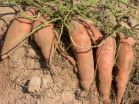(Press-News.org) If a person were to climb a towering redwood and take a sample from the top and bottom of the tree, a comparison would show that the DNA are different.
Christopher A. Cullis, chair of biology at Case Western Reserve University, explains that this is the basis of his controversial research findings.
Cullis, who has spent over 40 years studying mutations within plants, most recently flax (Linum usitatissimum), has found that the environment not only weeds out harmful and useless mutations through natural selection, but actually influences helpful mutations.
Cullis published his findings in the International Journal of Genetics and Molecular Biology and repeated them in the Journal of Visualized Experiments, where he challenged other scientists to repeat his experiment themselves.
Specifically, Cullis focuses on mutations involving the appearance of a small sequence of DNA known as LIS-1 and how the environment affects these changes.
The controversy stems from the idea that the environment changes organisms as they grow and these changes are passed on.
While originally accepted, the theory was eventually thrown out because science revealed that animals pass along DNA through their gamete or sex cells, which are not affected by the environment. This concept was assumed to be the same for plants, but Cullis's research says otherwise.
In his second study, three separate strands (the plastic strand, short strand, and tall strand) of the Stormont Cirrus variety of flax were grown under three separate conditions.
Each of the strands had been bred over multiple generations under different conditions: The plastic strand's ancestors were grown under control conditions, the short strand's ancestors were grown under low-nutrient conditions, and the tall strand's ancestors were grown under high-nutrient conditions.
The experiment showed each strand responded to each condition in a different way, corresponding to the environment its ancestors were grown in. The plastic strand outgrew the other strands under control conditions, the short strand outgrew the other strands when few nutrients were available, and the tall strand grew best when nutrients were readily available.
All this information does not completely explain Cullis's assertion that the environment can in a single generation help sift out the useful mutations.
This is where polymerase chain reaction (PCR) amplification of DNA comes in. Through this process, the researchers could see when a specific DNA sequence (in this case LIS-1) appears or disappears.
When the plastic strand is grown under low nutrient conditions, the LIS-1 sequence, which had been absent, appears and continues for future generations. Since the LIS-1 sequence helps plants survive when there is a shortage of nutrients, its presence helps confirm Cullis's belief that the environment can act on how a plant mutates and keep helpful mutations, even within one generation.
These findings help explain why the top of a redwood is genetically different from the bottom. Young redwoods grow by the tips of the existing branches budding into meristems. Each new meristem is different from the tree because the environment has affected its genetic makeup. And as the redwood grows, the top becomes more and more genetically different from the bottom.
Due to the controversy surrounding Cullis's findings, many scientists are hesitant to accept them as true. Cullis himself recalls at first being skeptical and thinking, "If this really works… [we can] get a plant that's better adapted to its environment in one generation."
These adapted plants have practical uses. Cullis hopes to identify the specific gene sequence responsible for flax's ability to withstand harsh environments and insert it into the DNA sequence of other plants so that they too can withstand trying environments.
This would bypass the current method of genetically engineering plants, which involves isolating specific DNA sequences that control heat-resistance, cold-resistance, pest-resistance, etc., and instead narrows the effort down to one DNA sequence.
By inserting this sequence into the plant and growing it in a specific trying environment, scientists could make the plant resistant to what they want. All of that plant's offspring would be adapted to the environment and ready to grow.
By making the plant do all the work, the price of producing better crops would be greatly reduced. This would greatly benefit developing nations that need a large supply of food in an otherwise harsh environment. The DNA sequence may no longer just help the plant survive, but can now help entire countries thrive.
INFORMATION:Prepared by Kyle Smith, Case Western Reserve University student.
END
College Park, Md. (July 1, 2011) -- Ever since an ordinary office inkjet printer had its ink cartridges swapped out for a cargo of cells about 10 years ago and sprayed out cell-packed droplets to create living tissue, scientists and engineers have never looked at office equipment in quite the same way. They dream of using a specialized bio-inkjet printer to grow new body parts for organ transplants or tissues for making regenerative medicine repairs to ailing bodies. Both these new therapies begin with a carefully printed mass of embryonic stem cells. And now there's progress ...
DALLAS – July 1, 2011 – Surgery and all its implications can be scary, especially so for pediatric patients and their parents who dread sometimes disfiguring scars.
Now a UT Southwestern Medical Center urologist has developed a new "hidden" minimally invasive procedure that makes scarring virtually invisible yet is just as effective as more common surgical methods.
"Currently used incisions, even with minimally invasive surgery, leave the child with up to three scars that are visible any time the abdomen is exposed. The new technique of hidden incision endoscopic surgery ...
Massachusetts General Hospital (MGH) researchers have discovered the first of an entirely new class of antiangiogenesis drugs – agents that interfere with the development of blood vessels. In a report in Proceedings of the National Academy of Sciences/Early Edition, the investigators describe how a compound derived from a South American tree was able, through a novel mechanism, to interfere with blood vessel formation in animal models of normal development, wound healing and tumor growth.
"Most of the FDA-approved antiangiogenesis drugs inhibit the pathway controlled ...
Woods Hole Oceanographic Institution (WHOI) researchers have filled an important gap in the study of tunicate evolution by genetically sequencing 40 new specimens of thaliaceans, gelatinous, free-swimming types of tunicates. Their study was featured on the cover of the June issue of the Journal of Plankton Research.
Tunicates are a phylum of animals closely related to vertebrates, with a firm, rubbery outer covering called a tunic, from which the name derives.
"Thaliaceans have been poorly represented in previous studies of tunicate evolution," said Annette Govindarajan ...
DETROIT – Wayne State University researchers believe medical practitioners can help reduce the number of breast cancer deaths among low-income African-American women by more effectively educating their patients about the importance of mammography screening.
In a study published this month in the Journal of Cancer Education, Rosalie Young, Ph.D., associate professor; Kendra Schwartz, M.D., M.S.P.H., interim chair; and Jason Booza, Ph. D., assistant professor, all from the Department of Family Medicine and Public Health Sciences in WSU's School of Medicine, examined clinical, ...
Patients with a form of pulmonary fibrosis often do not get referred to a tertiary care center quickly.
Delayed access is associated with a higher death rate.
Better methods of early detection would shorten time from first symptoms to referral.
(NEW YORK, NY, July 1, 2011) – Idiopathic pulmonary fibrosis (IPF)―scarring and thickening of the lungs from unknown causes―is the predominant condition leading to lung transplantation nationwide. Columbia University Medical Center researchers confirmed that delayed access to a tertiary care center for IPF is associated ...
Washington, D.C., June 30, 2011 –A citywide study published online in today's issue of Stroke: Journal of the American Heart Association demonstrates racial disparities in the use of clot-busting drugs to treat acute ischemic stroke, the most common type of stroke.
According to the study's results, significantly fewer black patients receive the drug tPA than whites because of delays in seeking emergency care and the presence of medical conditions that exclude them from receiving the treatment. On the other hand, racial bias in doctors' treatment decisions do not appear ...
RALEIGH, NC—Each year, a wide variety of new cut flower cultivars and species are evaluated in trials administered by North Carolina State University and the Association of Specialty Cut Flower Growers. The research, conducted at about 50 locations in the United States and Canada, provides valuable production and marketing information.
John M. Dole and a research team from North Carolina State University undertook a multiyear study designed to identify patterns of postharvest responses to commercial hydrator and holding floral preservatives among 121 cultivars from 47 ...
QUEBEC—A new, versatile strawberry has been introduced for home gardeners. 'Roseberry' is predicted to be very popular as an ornamental addition to gardens. The strawberry features attractive pink blooms and produces sweet, aromatic fruit all summer long. Because it produces flowers and fruits on stolons before they root, 'Roseberry' works equally well in hanging baskets and when planted as groundcover. 'Roseberry' premiered in HortScience.
According to scientist Shahrokh Khanizadeh, corresponding author of the report, 'Roseberry' (Fragaria xananassa Duch.) plants are ...
CHASE, LA—Sweetpotato is gaining popularity in the United States, where health-conscious consumers have created increased demand for the tasty, versatile food. According to the U.S. Department of Agriculture, per capita consumption of the crop increased over 24% from 1998-2008 and the value of the U.S. sweetpotato crop in 2009 exceeded $400 million.
Production costs for sweetpotato crops are high, requiring that commercial growers optimize their production techniques and quality to keep up with consumer demand. Because sweetpotato is vegetatively propagated, viruses ...


